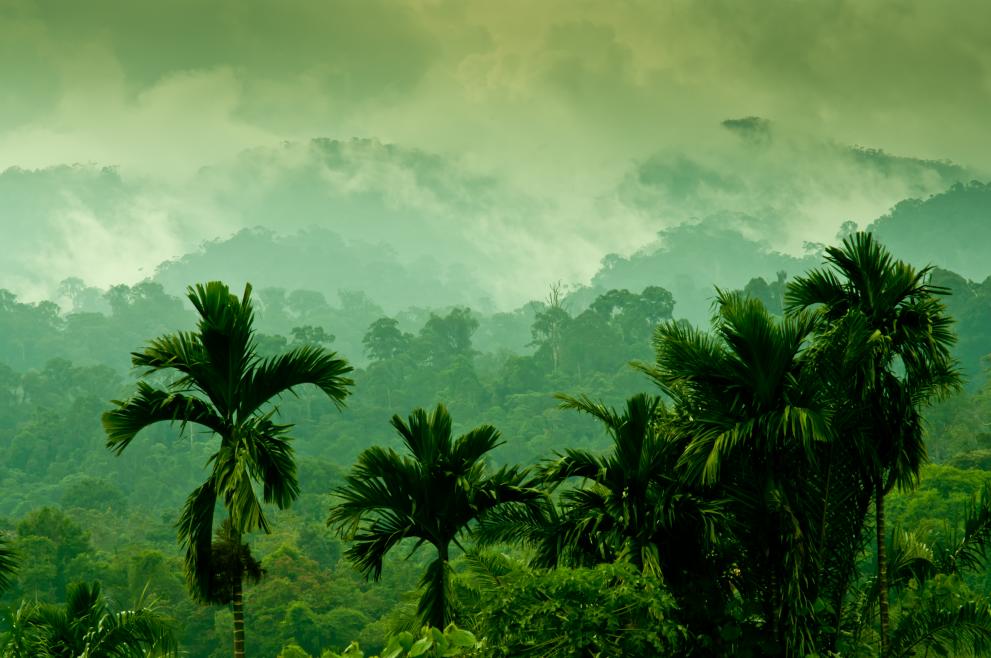
A recent Nature article warns of the urgent need for informed and joined-up thinking in making decisions about the future of Southeast Asia’s forests in order to mitigate global warming and biodiversity loss.
The article compares the impact of socioeconomic scenarios of plausible futures on Southeast Asia’s forests, one of the world’s major deforestation hotspots.

According to Valerio Avitabile, the JRC scientist involved in the research, "Recent scenarios indicate that, by 2050, Southeast Asian forests may shrink by 5.2 million ha or grow by 19.6 million ha, depending on which pathway we will take."
The choice of the development pathway is therefore critical for the future of the region’s forests and their ecosystem functions and services, and by extension, for the health of the planet.
The importance of tropical forests
Tropical forests are hugely important to the health of the planet. Although they cover only about 7% of the Earth’s land surface, they host nearly two-thirds of the world’s floral and faunal diversity, and store 68% of global carbon stocks.
Southeast Asia is home to nearly 15% of the world’s tropical forests. However, the region is also among the world’s major deforestation hotspots, and ranks among the highest in terms of severe biodiversity loss, mostly due to the conversion of intact forests into plantations, such as for palm oil.
Southeast Asia lost about 80 million ha of forest between 2005 and 2015, and it is feared that such deforestation could lead to over 40% of Southeast Asia's biodiversity vanishing by 2100. Human activities such as logging and clear-cutting for food production, cash crops and agriculture are the main drivers of this forest loss.
The future of forests in Southeast Asia
The new study used a scenario analysis framework called the Shared Socioeconomic Pathways (SSPs) which looks at different ways in which the world might evolve.
Under the best-case scenario (the “sustainability / taking the green road” scenario), leaders enforce policies characterised by “inclusive development and respect for perceived environmental boundaries, as well as high investment in human capital, education and awareness.”
On the opposite end of the spectrum, under the worst-case scenario (the “regional rivalry / rocky road” scenario), countries experience a lack of cooperation in addressing global environmental concerns, together with poor investments in education and awareness.
To help forest resource managers and national leaders plan for the future of Southeast Asia’s forests, the new report combined multi-year satellite data with land-use-change modelling, to forecast a range of plausible futures. This spatial analysis is important for impact analysis and to support local studies and environmental monitoring.
“Decision-makers often struggle to balance economic development with environmental protection” says Valerio. “These scenarios and maps give them a bird’s eye view of what could happen with the different policy paths, and support their choices”.
The study also showed the impact of the choices of each country in the region. In particular, Indonesia will have a key impact on the future of Southeast Asian forests, as it could host 41% of the potential forest gain (7.8 million hectares) under the best-case scenario, or be responsible for 48% of the total projected forest loss in the worst-case scenario.
Malaysia, Myanmar and Vietnam also rank among the countries could also lose significant forest cover. Moreover, deforestation would severely affect the older forests found in Indonesia and Malaysia.

The study underlines the importance of developing towards the sustainable pathway, and shows that strong policy support is needed to protect and preserve this extremely valuable natural resource.
However, even in the best-case scenario it is essential to promote native tree species over forest plantations, and ensure that deforestation is not displaced to other parts of the world to fulfil developed countries' demand for wood.
The authors stress that efforts should focus both on protecting and conserving the remaining forests and expanding forest cover through reforestation and/or afforestation for ecological as well as economic purposes.
This would help reduce poverty, promote food security, environmental stability and biodiversity conservation, and enhance climate change mitigation and adaptation, in line with the UN Sustainable Development Goals (SDGs), the New York Declaration on Forests and the UN initiative for Reducing Emissions from Deforestation and forest Degradation (REDD+).
Until recently, the uncontrolled exploitation and degradation that affected the region’s forests outweighed the forest regrowth. However, encouraging signs of landscape changes leading to afforestation and forest regrowth show that the region has the potential to gain more forests than it could lose over the coming decades, if global leaders make the right choices.
Further information
Related Content
Details
- Publication date
- 21 May 2019
